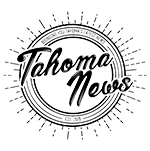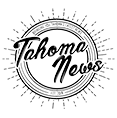Fake News: How to Stop it in the Act
May 30, 2019
From the news on tv to Santa Claus to conspiracy theories, we eat up the lies that we are told. Fake news is all around us and it can be difficult to identify. Here are a few tips to tell the difference between fact and fiction.
What is it? “I usually just don’t watch the news.” Said freshman Cassie Christensen about how to avoid fake news by avoiding all news. Christensen said that she will only share information she found if it seems reliable and trustworthy, “I don’t want to spread rumors”. The easiest way to swiftly recognize fake news is to identify if it is logical. If a story sounds too outrageous, it may be. Journalists’ main goal is to get their audience to indulge in their story and nothing draws attention like a shocking headline. Although this isn’t always the case, because the world is a crazy place, but this is the quickest way to identify what seems true.
Who made it? Whether it is a broadcast, newspaper, website or podcast someone made it. The author may seem credible because they seem to know what they’re talking about, but that isn’t always the case. Seeing who owns the site and what is their mission plan will show what kind of bias the publishers have. Although a website ends in .org, that doesn’t mean the site is credible. Websites that end in .org were given to non-commercial sites, but that isn’t always the case anymore. Just because the source is non-profit doesn’t make it a reliable source for news. Some websites, such as the Onion, are joke sites and don’t have any real fact to them. Another case can be that the writer is biased, Senior Rachel Roeth said, “Some news seems fake because of bias used so it’s sometimes hard to know what’s real.”.
What are the facts? Statistics and numbers seem reliable, it is concrete evidence that we use to take in information quickly. However, even if the statistics are correct, it can still be used to support fake news. The questions asked could be suggesting an idea but really mean something else. What is the sample study of the survey? In the mid nineteen hundreds, a study was conducted by the Department of Agriculture to create a sizing chart for women’s clothing. However, because the study group was volunteer oriented and the members would be paid, the poorer women of the time were the bulk of the focus group. The women were smaller and thinner than other women in America, making the results very different than the true average women of the time.
Fake news is all around us, drawing us to jump to conclusions when can get us to. “It’s bad… a bigger deal about it then it should be.” said senior Maggie Baze. Identifying it will keep from creating opinions without proper evidence and being misinformed.


